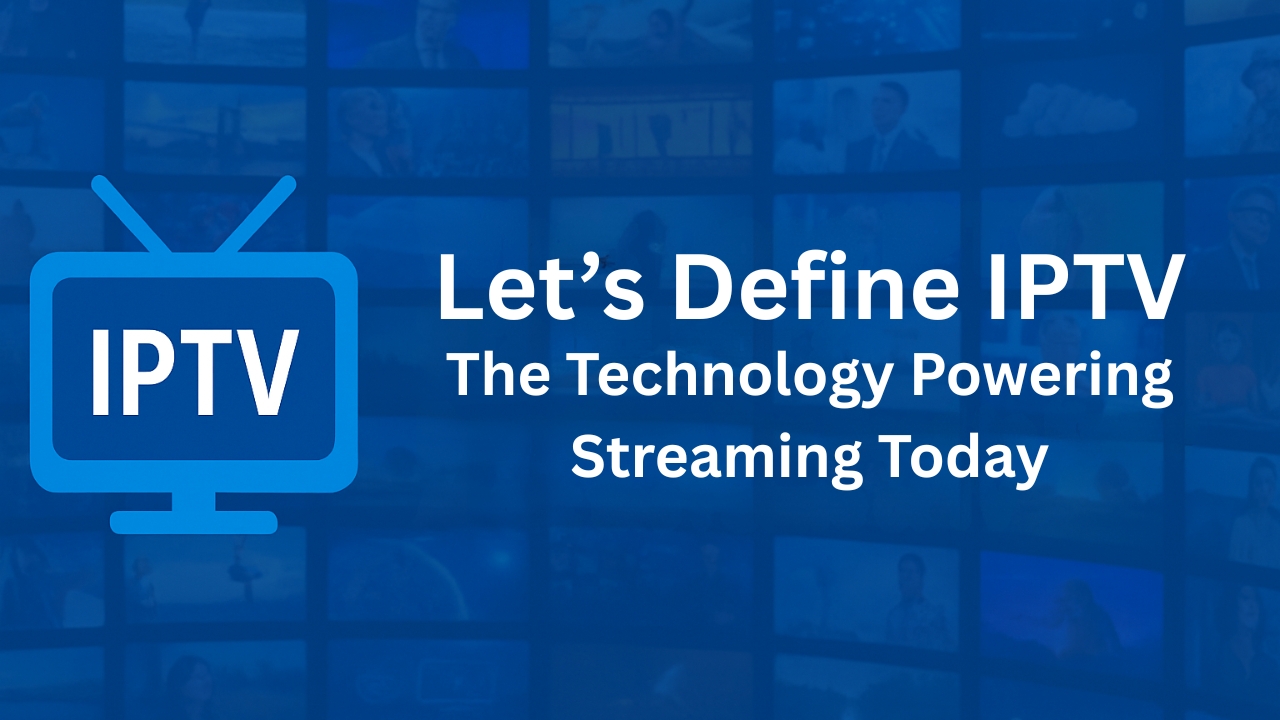
In the ever-changing landscape of digital media, few technologies have made an impact as profound as IPTV. As users worldwide shift from traditional cable TV to internet-based viewing platforms, it’s more important than ever to define IPTV and understand the innovation it brings to modern entertainment.
At its core, Internet Protocol Television (IPTV) is a method of delivering television content via the internet, rather than through older terrestrial, satellite, or cable formats. This allows for a revolutionary viewing experience—one that is not only more flexible and user-friendly but also dramatically more powerful in terms of what it can deliver. Whether it’s watching live global broadcasts, accessing on-demand shows, or time-shifting your favorite content, IPTV is powering streaming in ways traditional TV never could.
In this blog, we’ll break down everything you need to know about IPTV—from the technical definition to how it works, its real-world benefits, various types, and why it’s becoming the go-to method for viewers worldwide. Let’s begin by clearly defining IPTV and exploring how it’s shaping the future of television.
To define IPTV, we must start with the basics. IPTV stands for Internet Protocol Television. It is a system that delivers television content over the internet using IP networks. Instead of broadcasting programs at scheduled times like traditional TV, IPTV allows viewers to stream media continuously or access content on demand.
This workflow allows for real-time viewing, pause-and-play flexibility, and accessibility across the globe—key aspects of how IPTV is powering streaming forward.
Unlike cable TV, IPTV allows you to watch content when you want and how you want. Whether on a smartphone in a café or a smart TV at home, IPTV works across devices and platforms, giving users freedom and flexibility.
One of the most loved features of IPTV is its on-demand capability. Viewers no longer have to stick to TV schedules. You can browse through thousands of movies, shows, and live events and watch them at your convenience.
IPTV makes global content accessible. With the ability to stream channels from the UK, US, India, Pakistan, and more, users across the world, especially expats, can stay connected to their culture, language, and homeland.
Most IPTV platforms offer a personalized experience. You can favorite channels, create playlists, receive tailored recommendations, and set up parental controls—all of which enhance the user experience significantly.
Modern IPTV systems support HD and 4K quality streaming. Since IPTV runs over the internet, there’s no need for clunky hardware or dish antennas. A stable internet connection and a device are all that’s needed.

Just like traditional cable or satellite TV, Live IPTV streams programs as they are broadcast. Sports fans and news junkies typically prefer live IPTV for its real-time content.
This service allows viewers to select and watch video content when they choose. Services like Netflix and Hulu are popular VOD platforms and are based on IPTV principles.
Time-shifted IPTV allows viewers to watch previously broadcast shows later. It’s especially helpful for those in different time zones or with tight schedules.
| IPTV | Traditional TV |
| Watch anywhere with internet | Fixed to home/TV |
| On-demand and live content | Mostly live, scheduled |
| Global access | Limited to local/regional channels |
| More affordable | Expensive cable plans |
| Personalized content | One-size-fits-all |
The transition from cable TV to IPTV is not just logical but inevitable.
Despite all its benefits, IPTV does come with a few caveats:
IPTV, or Internet Protocol Television, is a system that delivers TV content through the internet instead of traditional broadcasting methods.
By allowing on-demand content, live global channels, and cross-device support, IPTV makes streaming more flexible and dynamic.
Not exactly. Netflix and Hulu are examples of VOD (Video on Demand) services under the IPTV umbrella. IPTV also includes live TV and time-shifted services.
Yes, when provided by a licensed and legitimate service. Avoid illegal IPTV services that stream copyrighted content without permission.
A minimum of 10 Mbps is ideal for SD streaming. For HD or 4K, 25 Mbps or more is recommended.
As we’ve explored, to define IPTV is to describe a technology that is completely transforming how we experience entertainment. With its unique blend of flexibility, personalization, and convenience, IPTV is at the forefront of the streaming revolution.
By powering streaming for millions across the globe, IPTV is not just a cable replacement—it’s an upgrade. It breaks the barriers of geography, language, and rigid programming schedules to deliver a highly customized viewing experience for today’s global audience.
Whether you’re a busy professional, a global nomad, or a household looking for better options, IPTV offers a future-ready solution. It’s more than just a trend—it’s the new definition of how we watch, engage with, and enjoy television.